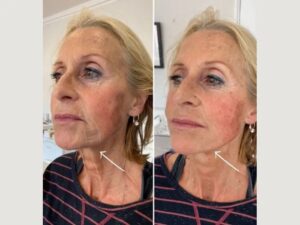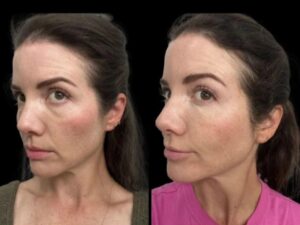
Allergies can be more than a seasonal nuisance for athletes, they can impact breathing, endurance, recovery, and overall performance. Whether it’s pollen in the air, a protein in their pre-game meal, or chlorine in a swimming pool, allergic triggers can appear anywhere. Yet, despite these challenges, countless professional and amateur athletes continue to perform at elite levels. Their secret lies in preparation, prevention, and proactive management of allergic reactions.
Athletes push their bodies to the limit, often outdoors and in unfamiliar environments. Because of this, their exposure to allergens is higher than that of the average person. Managing allergies is not just about comfort; it’s about safety, consistency, and sustaining peak performance.
Common Allergies Athletes Face
Allergies affect each athlete differently, depending on their sport, environment, and body chemistry. Some of the most common triggers include:
1. Seasonal and Environmental Allergies
Pollen, grass, and dust are among the most frequent causes of allergic symptoms. Runners, cyclists, and soccer players training outdoors often face seasonal spikes in allergens. Even a light breeze can stir up pollen and dust, causing sneezing, watery eyes, or nasal congestion. Such symptoms can make breathing harder and compromise focus during critical moments.
2. Food Allergies
Food sensitivities can be life-threatening for athletes. Common allergens like nuts, shellfish, dairy, soy, and gluten can trigger mild to severe reactions. For athletes who travel frequently, managing meals in different countries or facilities can be challenging. One mistake at a buffet table or energy bar ingredient list can lead to a serious reaction mid-competition.
3. Environmental and Chemical Triggers
Swimmers often face allergic responses to chlorine or pool disinfectants. Indoor athletes might struggle with dust mites or mold in poorly ventilated arenas. Pollution and temperature changes can also aggravate conditions like asthma, compounding allergy risks during intense training sessions.
Challenges for Athletes
Athletes with allergies walk a fine line between pushing performance and protecting their health. Their challenges extend beyond occasional sneezing or itchy eyes. Allergic reactions can lead to reduced oxygen intake, fatigue, and slower recovery times. When respiratory symptoms appear during exercise, they can mimic overexertion, making it hard to identify the true cause.
Another major concern is unpredictability. Athletes compete and train in diverse environments from high-altitude regions to humid tropical climates. Each new location presents potential allergen exposures. Maintaining performance under these varying conditions requires constant awareness, adaptability, and coordination with medical teams.
Moreover, managing medication is a delicate balance. Some allergy medicines can cause drowsiness or interfere with cardiovascular performance. Therefore, athletes must rely on medical experts to find safe, effective alternatives that comply with anti-doping regulations.
To address emergencies efficiently, many professionals now use digital health identifiers like a Wearable QR medical label that stores allergy information and medical data. In case of a sudden allergic reaction during training or competition, medical staff can scan it instantly to access vital details such as allergy types, emergency contacts, and prescribed treatments. This proactive approach adds a layer of protection without interfering with athletic performance or comfort.
How Athletes Stay Protected
The best defense for allergic athletes is preparation. They combine medical guidance, environmental control, and smart lifestyle choices to minimize risks.
1. Regular Allergy Testing and Personalized Plans
Routine allergy tests help athletes identify triggers and monitor how their reactions evolve. Personalized plans, often designed by sports physicians and allergists, guide training adjustments and emergency protocols. Knowing what to avoid is as important as knowing how to treat a reaction quickly.
2. Medications Under Expert Supervision
Prescription antihistamines, nasal sprays, or inhalers can help control symptoms, but they must be used strategically. Athletes work closely with medical teams to ensure that any medication is both effective and compliant with sports regulations. Timing also matters; some medications are taken hours before exposure to allergens, ensuring that performance remains unaffected.
3. Adapting Training Environments
When possible, athletes plan outdoor sessions when pollen counts are low, often early morning or after rain. In highly allergenic seasons, indoor training facilities provide safe alternatives. Air purifiers, humidifiers, and hypoallergenic filters further help reduce triggers during rest and recovery periods.
4. Nutritional and Lifestyle Adjustments
A balanced diet rich in antioxidants, omega-3 fatty acids, and vitamins C and E helps reduce inflammation and strengthen immunity. Hydration is critical, too drinking plenty of water helps flush allergens and supports respiratory health. Athletes with food allergies work with sports nutritionists to design customized meal plans, ensuring that energy intake stays optimal without exposure to allergens.
5. Protective Gear and Hygiene Practices
Wearing masks or goggles during pollen season can shield athletes from direct exposure. Swimmers often use specialized nose clips or goggles designed for sensitive skin. After training, washing clothes and showering immediately helps remove lingering allergens like pollen or dust. Simple routines like these can make a significant difference in symptom control.
Role of Medical and Support Teams
Behind every successful athlete with allergies stands a coordinated medical and support team. Doctors, coaches, physiotherapists, and nutritionists collaborate to monitor allergic reactions and adjust training schedules accordingly. They also ensure that emergency action plans are always in place.
Emergency Preparedness
These plans include easy access to medications such as epinephrine auto-injectors, inhalers, or antihistamines. Coaches and teammates are trained to recognize early signs of allergic reactions wheezing, swelling, or dizziness and to act quickly. The goal is prevention first, but readiness for emergencies remains essential.
Coordination and Communication
Team physicians also maintain communication with event organizers. They ensure allergen-free meal options and medical support are available at venues, particularly during international competitions. Such attention to detail not only prevents incidents but also gives athletes peace of mind, letting them focus entirely on performance.
Real-Life Examples
Many world-class athletes have openly discussed their allergy challenges. Olympic swimmer Ryan Lochte dealt with chlorine sensitivity throughout his career but learned to adapt through protective eyewear and post-swim routines. Tennis star Novak Djokovic has managed food sensitivities by maintaining a strict gluten-free diet that enhanced his endurance and focus.
Track and field athletes often face seasonal allergies but rely on expert medical guidance to continue competing at the highest level. These examples show that discipline, awareness, and preparation allow athletes to thrive despite allergies.
Conclusion
Allergies need not stand between an athlete and their goals. With careful management, smart technology, and strong medical support, athletes can stay safe and perform at their best. The key lies in awareness knowing one’s triggers, planning accordingly, and staying ready for unexpected exposures.
From specialized diets to digital safety solutions like the medical label, modern athletes have more tools than ever to stay protected. Their stories remind us that resilience is not just physical; it’s also about adapting intelligently to life’s challenges. With the right protection, every athlete allergic or not can continue chasing victory safely and confidently.






